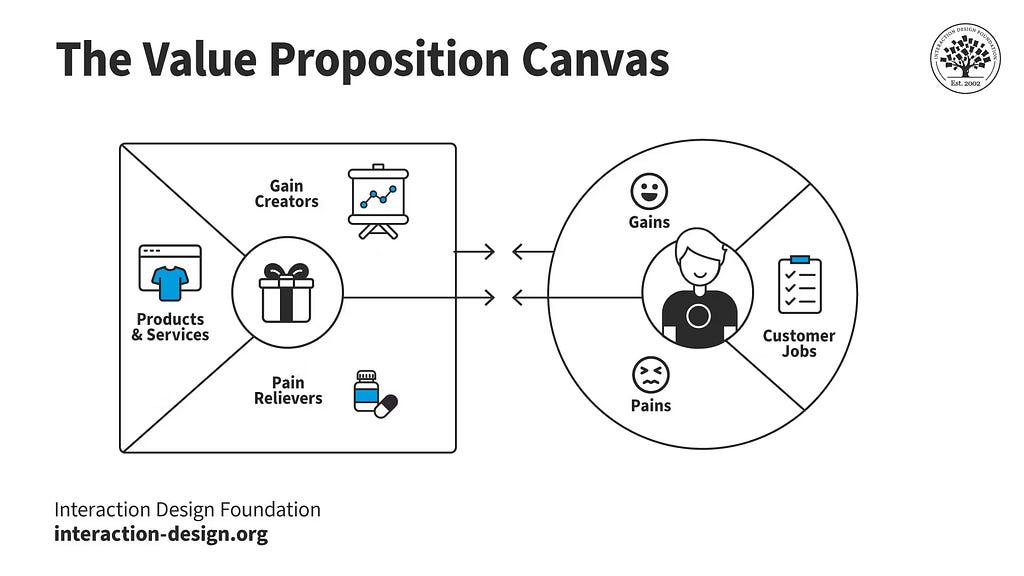
And why history repeats itself over and over again.

Have you ever been frustrated by an app or website that seems to be working against you? It’s as if the designers didn’t think about how real people would use it. That’s where product thinking comes in. It’s a way of designing that keeps the user at the forefront of the process, ensuring that their needs and challenges are fully understood before any solutions are created. In this post, I will share some of the values of product thinking I have learned over the years and share some tips on how to build good User Experience for the masses.
It is a process learned through continued learning to stay ahead, develop soft skills, and cultivate empathy for the user. I found following these principles incredibly useful and you can too use them to create products and experiences that truly serve your users.
The value of product thinking
A cornerstone of product thinking is the meticulous study of the user’s journey. We meticulously map out the steps a user takes to achieve a specific goal, pinpointing their pain points and frustrations. By doing so, we can design products and services that are tailor-made to address these issues, creating a seamless and enjoyable user experience.

Equally important is the consideration of the product’s value proposition. What unique benefits does the product offer to users? How does it solve their problems or improve their lives? By clearly defining the product’s value proposition, businesses can ensure that their product stands out in the market and that users can easily understand the value they will get from using it.

It’s also important to know that the aspects of Value prop and Mission statement of your product team can be very different. Here’s a clear breakdown of the differentiators between a Value Proposition and a Mission Statement, along with guidance on what kind of overlap is ideal and strategically beneficial.

Ideal Overlap Between the Two
While distinct, a healthy overlap between the two ensures strategic alignment and authenticity. Here’s what that looks like:
- Shared Purpose Language:
Both should express a consistent why — the company’s fundamental reason for existing.
Example: If the mission is “to simplify global communication,” the value proposition might echo that with “helping teams connect seamlessly across borders.” - Cohesive Brand Identity:
The value proposition should flow naturally from the mission — the mission is why the company exists; the value proposition is how it creates value in the market. - Emotional + Rational Blend:
Mission: evokes emotion and belief (“We exist to improve lives”).
Value Proposition: translates belief into tangible benefit (“We deliver affordable healthcare tools to everyone”). - Internal and External Alignment:
Employees motivated by the mission are better able to deliver the value proposition authentically. This alignment ensures that marketing promises (value prop) match lived experience (mission).
Prioritizing features according to user needs and business objectives is another key aspect of product thinking. Not all features are created equal, and it’s essential to allocate resources to those that will deliver the most value to users and align with the strategic goals of the business. Through comprehensive user research and analysis, we can make informed decisions about which features to prioritize and develop.
Finally, testing and iterating on designs is essential to ensure that products meet user needs. User testing provides valuable feedback that can be used to refine and improve the product. By iterating on designs based on user feedback, businesses can create products that are user-friendly, effective, and enjoyable to use.
Building experience for the masses
Crafting Inclusive User Experiences for the Masses:
Creating products and services that meet the needs of a wide range of users is a key part of building UX for everyone. This requires a holistic approach that includes accessibility, inclusion, cultural sensitivity, and strong user research.
In the age of mobile-first technology, it’s crucial to design with mobile in mind. This means creating interfaces that are easy to navigate and interact with on smaller screens. Intuitive touch gestures and clear calls to action are key to a great user experience, and thorough testing across devices and network conditions is essential to ensure your design works for everyone.
Accessibility and inclusivity are not just buzzwords; they are fundamental to great UX design. Making sure that people with disabilities — whether they have vision impairments, hearing loss, or other challenges — can use your product isn’t just the right thing to do, it’s also good for business. Using clear and simple language, providing text alternatives for non-text content, and making sure your product works with assistive technologies can help you reach a wider audience.
Cultural sensitivity is another key ingredient in the recipe for successful global UX. Understanding the unique expectations and preferences of diverse cultures is vital to crafting interfaces that resonate with users from different backgrounds. This may involve employing culturally appropriate colors, fonts, and imagery, as well as localizing content to cater to specific languages and cultural norms.
And finally, ongoing user research and testing are critical to a UX designer’s success. Surveys, interviews, and usability testing can provide valuable insights into what users need, want, and find frustrating. By involving users in the design process, we can create products that are truly user-centered and that provide a positive and inclusive experience for everyone.
Keep learning to stay relevant
The world of product design and development is always changing, with new technologies, trends, and user needs emerging all the time. To stay relevant and effective in this dynamic landscape, it’s important for designers to embrace a mindset of continuous learning and skill development. This means staying up-to-date with the latest industry knowledge, seeking out new opportunities for growth, and cultivating a diverse skill set that goes beyond technical expertise.
You can use this GROW framework:
The word GROW captures the essence of continuous learning : it’s active, personal, and forward-looking. It reminds us that development isn’t about perfection; it’s about progress, curiosity, and courage. Each letter represents a mindset that fuels sustained growth in any field.

Among the most vital soft skills for UX designers is the art of active listening, the ability to truly hear what users are saying and comprehend their needs. It also involves the capacity to ask the right questions and seek clarity when needed. Empathy is another cornerstone of the UX designer’s skill set, enabling one to step into the user’s world, understand their emotions, and motivations. By cultivating empathy, we can craft products that are not only user-friendly but also a joy to use.
Effective communication is yet another vital soft skill for UX designers. This encompasses the ability to articulate one’s ideas clearly and concisely, as well as the capacity to listen to feedback and integrate it into one’s work. Time management, too, is of the essence. The skill to plan, prioritize, and meet deadlines is paramount for the successful completion of projects to the highest standard.
Building your soft skills
Soft skills are the interpersonal and communication abilities that are crucial for success in any job. They encompass active listening, empathy, communication, and time management. In UX design, soft skills are indispensable for comprehending the user’s requirements and crafting products that fulfill those needs. By honing your soft skills, you can elevate your standing as a UX designer and enhance your prospects for triumph in the industry.
Empathy for the win
Empathy is a critical soft skill for UX designers. It allows us to understand the needs and desires of our users on a deeper level. By putting ourselves in the shoes of our users, we can create products and services that are truly user-centric.
We, as designers, can cultivate empathy through active listening, striving to comprehend the user’s perspective without bias. Engaging in user research, we can observe users in their natural settings, gaining valuable insights into their behaviors, needs, and challenges.
This begs larger questions about AI’s impact on creativity
The rise of artificial intelligence (AI) has brought about significant advancements in various industries, including design. With the ability to process vast amounts of data and perform complex tasks, AI has the potential to greatly enhance the design process and improve the overall user experience.
However, as AI continues to evolve and become more integrated into the design process, it raises questions about its impact on creativity. Some argue that AI will replace human designers, making their skills and expertise obsolete. Others believe that AI will simply assist and enhance the work of designers, allowing them to focus on more creative and strategic aspects of the design process.
One of the main concerns is that AI may limit the diversity and uniqueness of designs. As AI algorithms are based on data and patterns, there is a risk that designs may become too similar and lack originality. This could result in a homogenization of design, stifling creativity and innovation.
On the other hand, AI has the potential to open up new possibilities and push the boundaries of design. By automating repetitive tasks and providing designers with insights and suggestions, AI can free up time for designers to explore new ideas and experiment with different approaches. This can lead to more innovative and unique designs that would not have been possible without AI.
Another issue to consider is the ethical implications of AI in design. As AI algorithms are trained on existing data, there is a risk of perpetuating biases and discrimination in designs. It is crucial for designers to be aware of these biases and actively work towards creating inclusive and ethical designs.
In conclusion, the impact of AI on creativity in design is a complex and ongoing discussion. While AI has the potential to greatly enhance the design process, it is essential for designers to approach it with caution and continue to prioritize human creativity and empathy in their work. By understanding and harnessing the capabilities of AI, designers can create truly impactful and meaningful designs for the benefit of users.
So as you move forward, remember to SIP, DIP, and FLIP. SIP the world around you to take in its ideas, lessons, and experiences with curiosity. DIP into them deeply, let understanding soak through your thoughts, shaping your perspective and intent. And then, FLIP — turn insight into impact, thought into motion, and potential into progress. Because wisdom isn’t just about what we take in, but what we do with it.
Reference Tools:
I am not paid to promote this. The Business Model Canvas is a strategic management and entrepreneurial tool. It allows you to describe, design, challenge, invent, and pivot your business model.
Thank you for your time. If you read till here, we have created a bonding. You have my energy, I have yours. Move on my friend! This universe is with you.
✔️Find me on LinkedIn
See you in the next article 👋🏻
Internalize the problem before jumping into the solution was originally published in UX Collective on Medium, where people are continuing the conversation by highlighting and responding to this story.